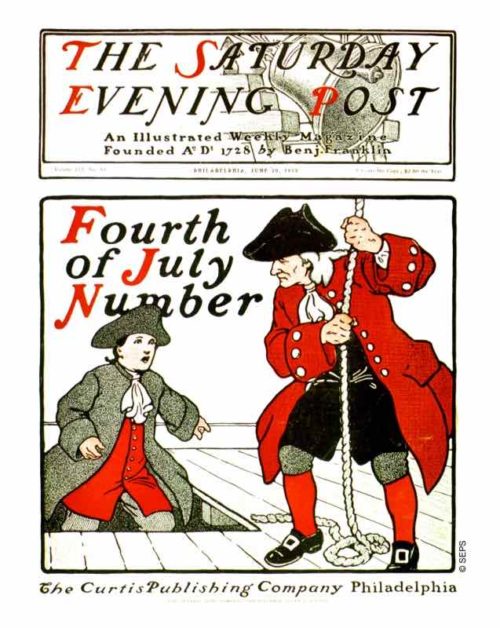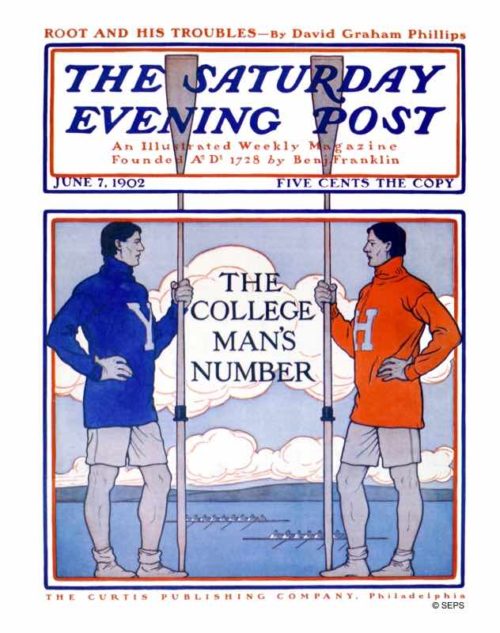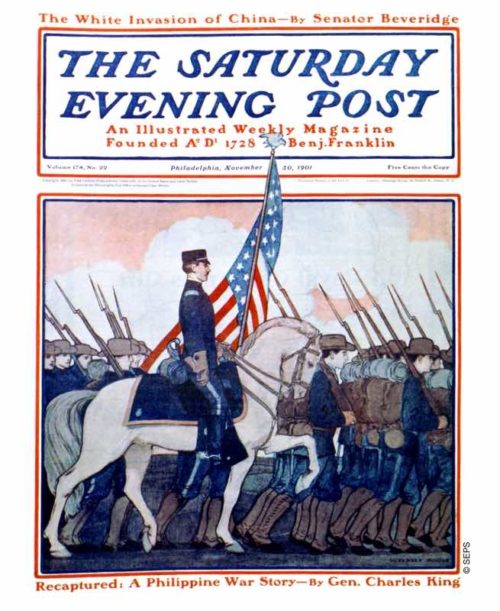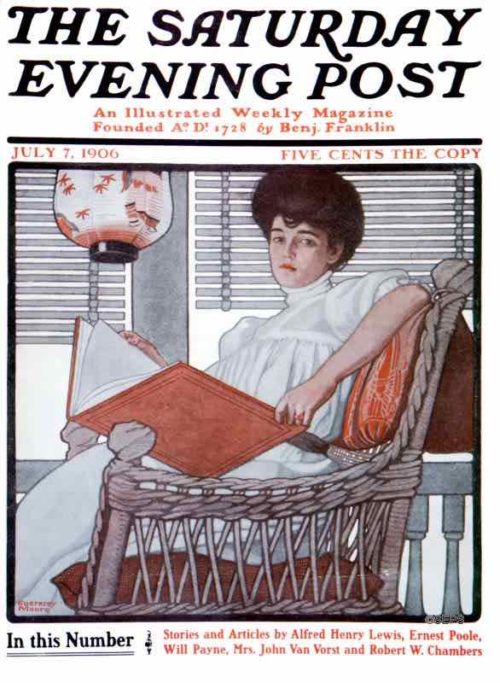Cover Collection: The Striking Art of Guernsey Moore
Guernsey Moore (1874-1925) was instrumental in changing the look of The Saturday Evening Post in the early 1900s. In the 1800s, the Post looked like a standard tabloid newspaper; Moore and artist J.J. Gould redesigned it to be the illustration-heavy magazine that still exists today.
Moore was one of the most prolific artists for the Post, painting 62 covers over the course of his career. His work was immediately recognizable for its heavy black outlines, poster-style compositions, and somber models. Below is a selection of some of our favorite covers.

June 30, 1900
This cover from June 30, 1900, was the Post’s first Fourth of July cover, as well as Moore’s first cover for the magazine. Here we see patriots ringing the Liberty Bell. Using colonials as representatives of the Fourth was popular before the days of fireworks and parades. Note that Moore also illustrated the new lettering for the Post’s masthead.

October 26, 1901
Moore’s Halloween cover shows that Jack-o-lanterns have been popular for quite some time. In fact, they date back to nineteenth century Ireland, where turnips were carved into grotesque faces in order to ward off evil spirits.

June 7, 1902
Throughout the nineteen-aughts, the Post featured at least one “College Man’s Number” a year, highlighting the benefits that these (mostly Ivy League) schools could impart to virile, dapper, and fun-loving young men. According to Daniel A. Clark in his book, Creating the College Man: American Mass Magazines and Middle-Class Manhood, “In no uncertain terms, the transformation of the college man was intertwined with a broad shift in masculine ideals that occurred in the late nineteenth and early twentieth centuries.” As one of America’s most popular magazines, the Post played a significant role in facilitating that shift.

April 23, 1904
America’s interest in Asian culture grew in the 1920s, showing up in Western fashion, furniture, and textiles. This interest in the Far East was also reflected in many Saturday Evening Post covers of the era, including Moore’s depiction of a Japanese woman.

November 30, 1901
This illustration captures a scene from the little remembered Philippine-American War, 1899-1902. The conflict was sparked when the U.S. took possession of the Philippines from Spain at the conclusion of the Spanish-American War.

July 7, 1906
This seated woman is typical of the way Moore painted all of his models; in the midst of some enjoyable activity, but with a somber gaze. Whether they were gardening, baking, or receiving a valentine, they rarely looked happy about it. Note the Asian décor represented by the paper lantern.

December 24, 1904
The Saturday Evening Post loved its Christmas covers, and Moore painted several. This was one of his few covers featuring a child. Despite being surrounded by many new toys, the boy’s subdued expression is quinetessential Moore.

August 21, 1915
Moore depicted British, French, and Italian, soldiers, representing the three leading allied nations in Europe. Although the United States would not join World War I until 1917, the Great War was obviously on the minds of many Americans.

January 19, 1924
This is the last cover that Guernsey Moore painted for the Post. The cover is representative of his heavily outlined Arts and Crafts style. The large, brightly-colored flowers borrow motifs of the Far East.